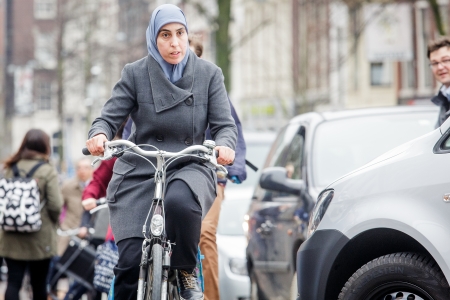Cyclists and pedestrians are not so sure that self-driving cars will see them and stop for them. As long as they are not convinced, they will generally behave prudently towards these automated vehicles. This is one of the findings in the still limited number of international studies into the interaction between self-driving cars and cyclists and pedestrians. Little is known about the behaviour of this latter group; automated vehicles are mainly developed from the perspective of the vehicle and the technology to detect cyclists and pedestrians.
The report Safe interaction between cyclists, pedestrians and automated vehicles (R-2016-16), presents the inventory SWOV has made of the knowledge gaps about safe interaction between automated vehicles and vulnerable road users, from the perspective of cyclists and pedestrians.
Cars must learn to detect ánd to interpret
Self-driving cars must not only ‘learn’ to detect cyclists and pedestrians, they should also ‘learn’ to interpret and predict the behaviour of cyclists and pedestrians. To make this possible more should be known about the behaviour of cyclists and pedestrians towards (partially) automated vehicles, and where this behaviour may differ from their behaviour towards conventional cars. If large differences bare found, this means, for example, that software developers cannot base their algorithms on the behaviour that pedestrians and cyclists currently show towards man-driven cars.
“These and other questions need to be answered; this is necessary to ensure that traffic will really be safer after a large scale introduction of automated vehicles.” says SWOV’s Prof. Dr Marjan Hagenzieker. “In 2017, we are continuing this study.”
Also read: Safely towards self-driving vehicles, in which SWOV discusses the developments that are to be expected during the automation of the traffic system and the opportunities and risks that are the result of these developments. This leads to a research agenda that indicates which new knowledge is needed to seize the opportunities and limit the risks.

